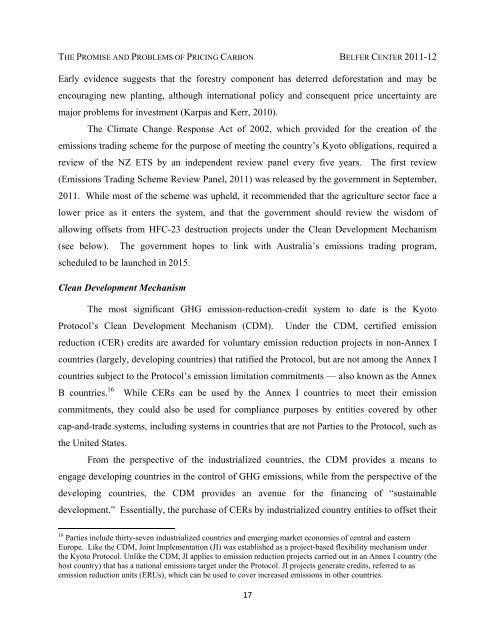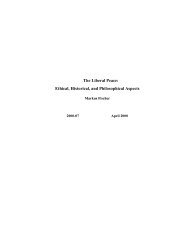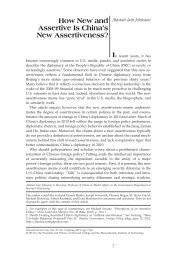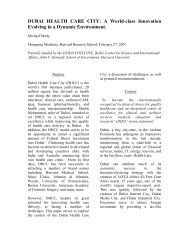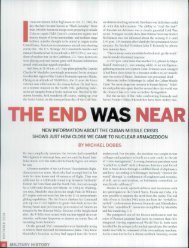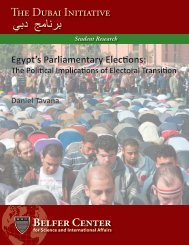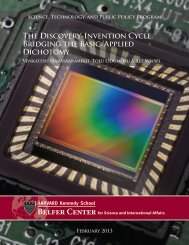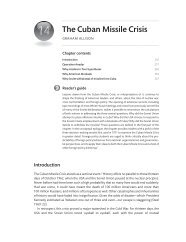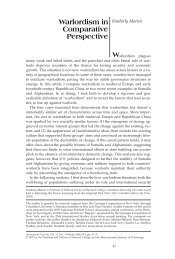The Promise and Problems of Pricing Carbon: - Belfer Center for ...
The Promise and Problems of Pricing Carbon: - Belfer Center for ...
The Promise and Problems of Pricing Carbon: - Belfer Center for ...
You also want an ePaper? Increase the reach of your titles
YUMPU automatically turns print PDFs into web optimized ePapers that Google loves.
THE PROMISE AND PROBLEMS OF PRICING CARBON BELFER CENTER 2011-12<br />
Early evidence suggests that the <strong>for</strong>estry component has deterred de<strong>for</strong>estation <strong>and</strong> may be<br />
encouraging new planting, although international policy <strong>and</strong> consequent price uncertainty are<br />
major problems <strong>for</strong> investment (Karpas <strong>and</strong> Kerr, 2010).<br />
<strong>The</strong> Climate Change Response Act <strong>of</strong> 2002, which provided <strong>for</strong> the creation <strong>of</strong> the<br />
emissions trading scheme <strong>for</strong> the purpose <strong>of</strong> meeting the country’s Kyoto obligations, required a<br />
review <strong>of</strong> the NZ ETS by an independent review panel every five years. <strong>The</strong> first review<br />
(Emissions Trading Scheme Review Panel, 2011) was released by the government in September,<br />
2011. While most <strong>of</strong> the scheme was upheld, it recommended that the agriculture sector face a<br />
lower price as it enters the system, <strong>and</strong> that the government should review the wisdom <strong>of</strong><br />
allowing <strong>of</strong>fsets from HFC-23 destruction projects under the Clean Development Mechanism<br />
(see below). <strong>The</strong> government hopes to link with Australia’s emissions trading program,<br />
scheduled to be launched in 2015.<br />
Clean Development Mechanism<br />
<strong>The</strong> most significant GHG emission-reduction-credit system to date is the Kyoto<br />
Protocol’s Clean Development Mechanism (CDM). Under the CDM, certified emission<br />
reduction (CER) credits are awarded <strong>for</strong> voluntary emission reduction projects in non-Annex I<br />
countries (largely, developing countries) that ratified the Protocol, but are not among the Annex I<br />
countries subject to the Protocol’s emission limitation commitments — also known as the Annex<br />
B countries. 16 While CERs can be used by the Annex I countries to meet their emission<br />
commitments, they could also be used <strong>for</strong> compliance purposes by entities covered by other<br />
cap-<strong>and</strong>-trade systems, including systems in countries that are not Parties to the Protocol, such as<br />
the United States.<br />
From the perspective <strong>of</strong> the industrialized countries, the CDM provides a means to<br />
engage developing countries in the control <strong>of</strong> GHG emissions, while from the perspective <strong>of</strong> the<br />
developing countries, the CDM provides an avenue <strong>for</strong> the financing <strong>of</strong> “sustainable<br />
development.” Essentially, the purchase <strong>of</strong> CERs by industrialized country entities to <strong>of</strong>fset their<br />
16 Parties include thirty-seven industrialized countries <strong>and</strong> emerging market economies <strong>of</strong> central <strong>and</strong> eastern<br />
Europe. Like the CDM, Joint Implementation (JI) was established as a project-based flexibility mechanism under<br />
the Kyoto Protocol. Unlike the CDM, JI applies to emission reduction projects carried out in an Annex I country (the<br />
host country) that has a national emissions target under the Protocol. JI projects generate credits, referred to as<br />
emission reduction units (ERUs), which can be used to cover increased emissions in other countries.<br />
17


